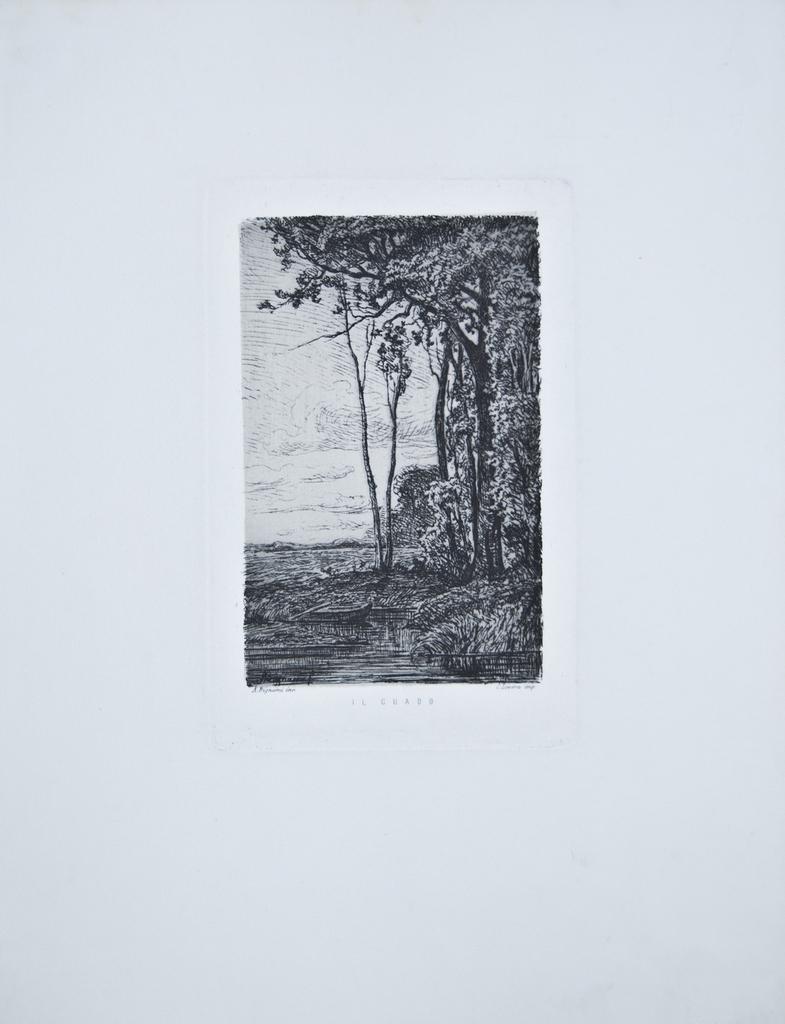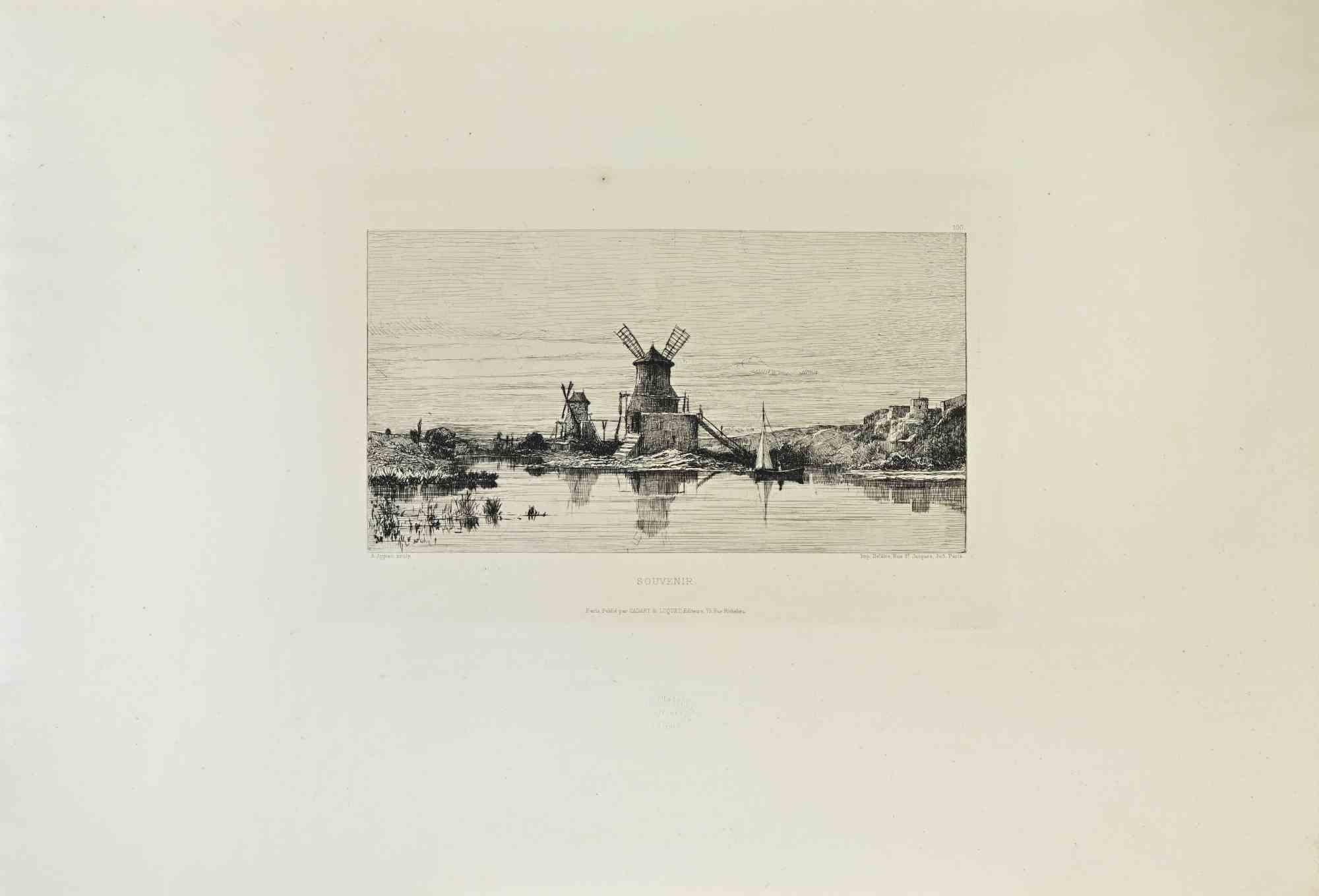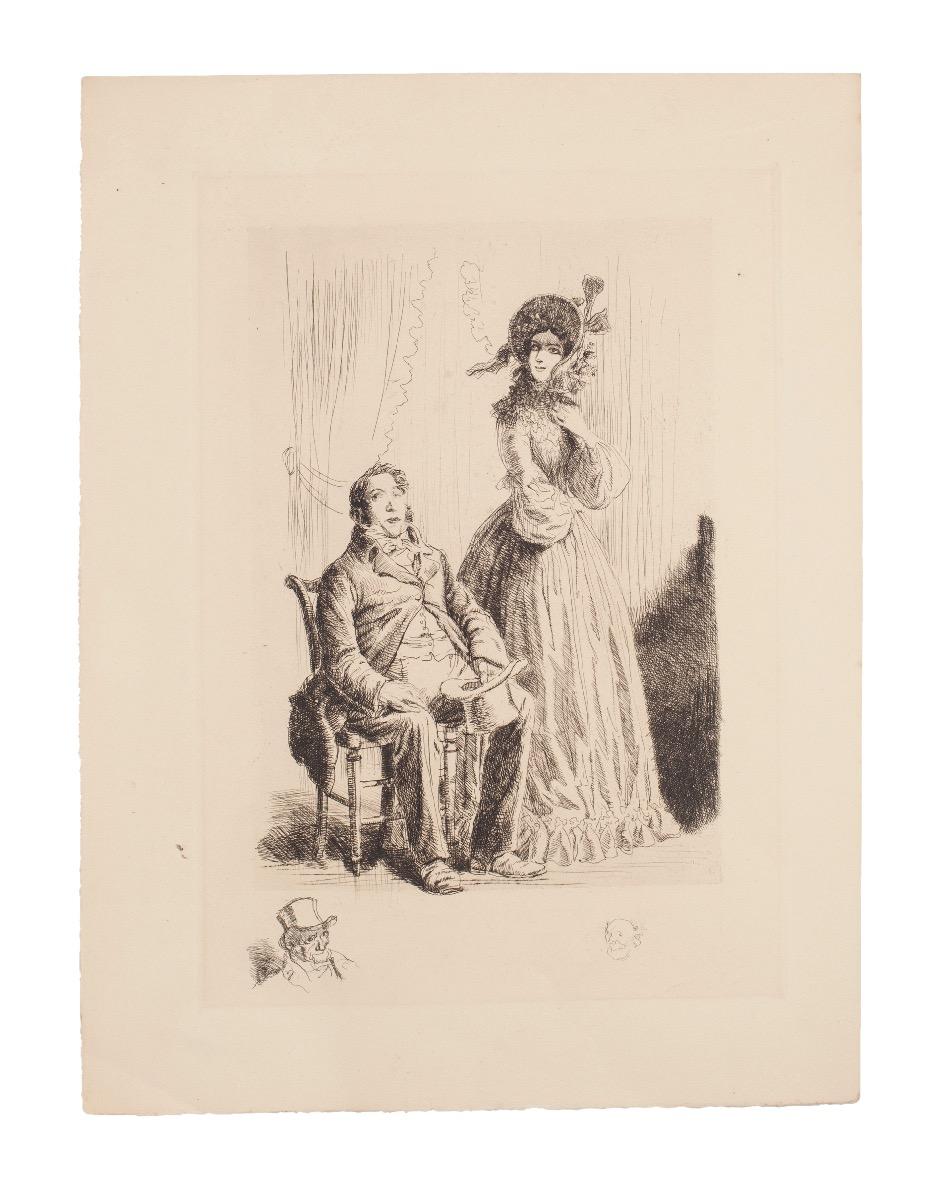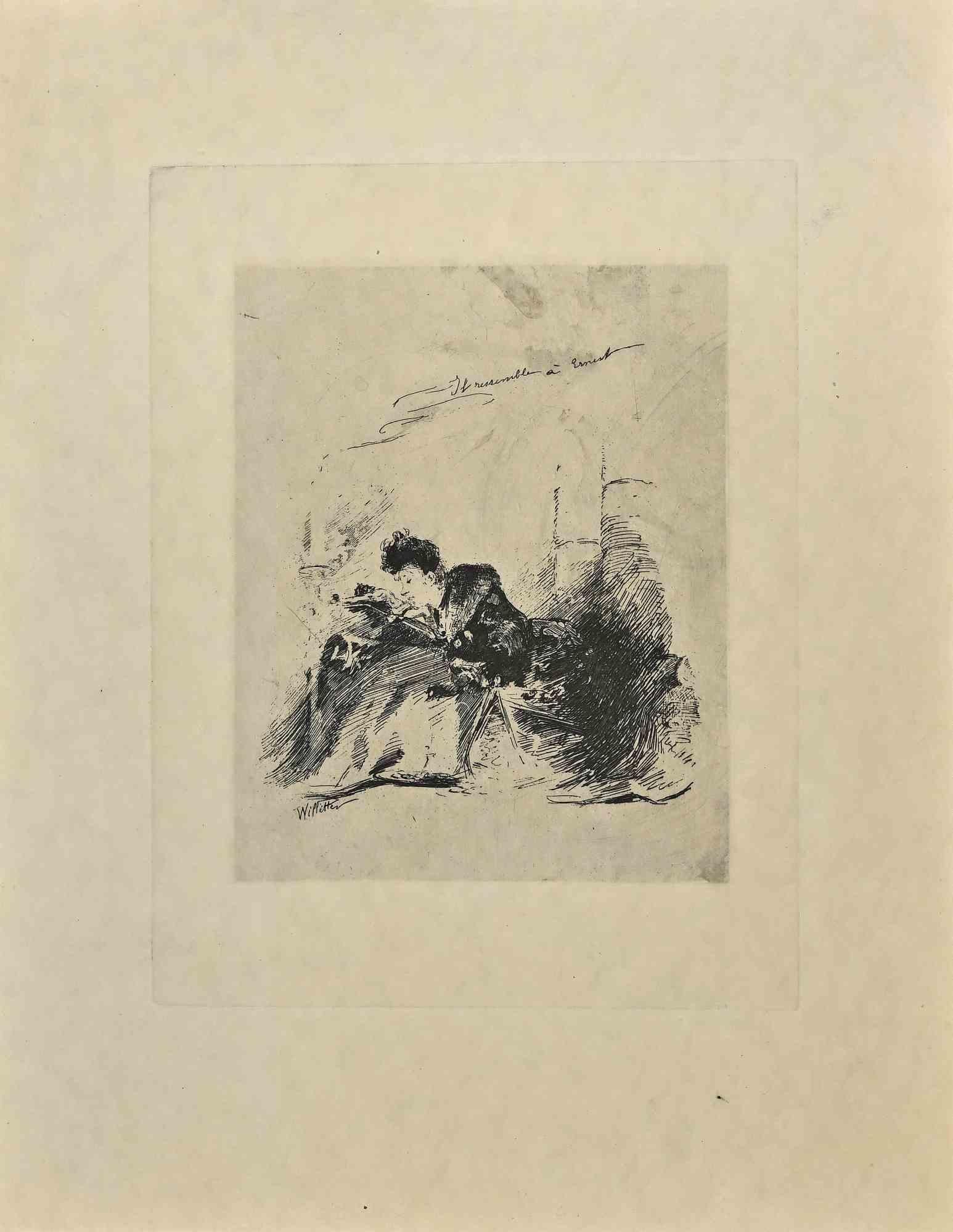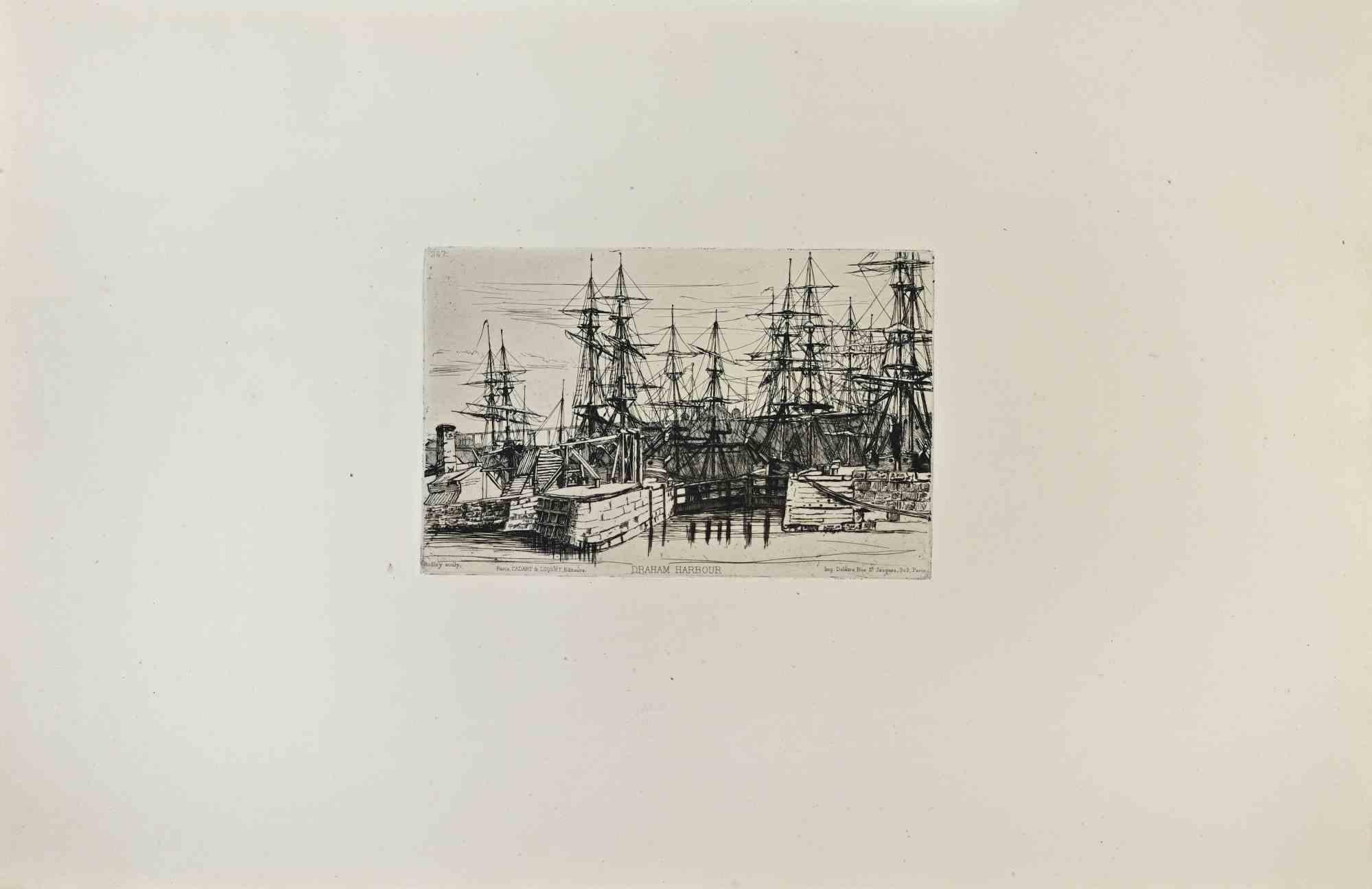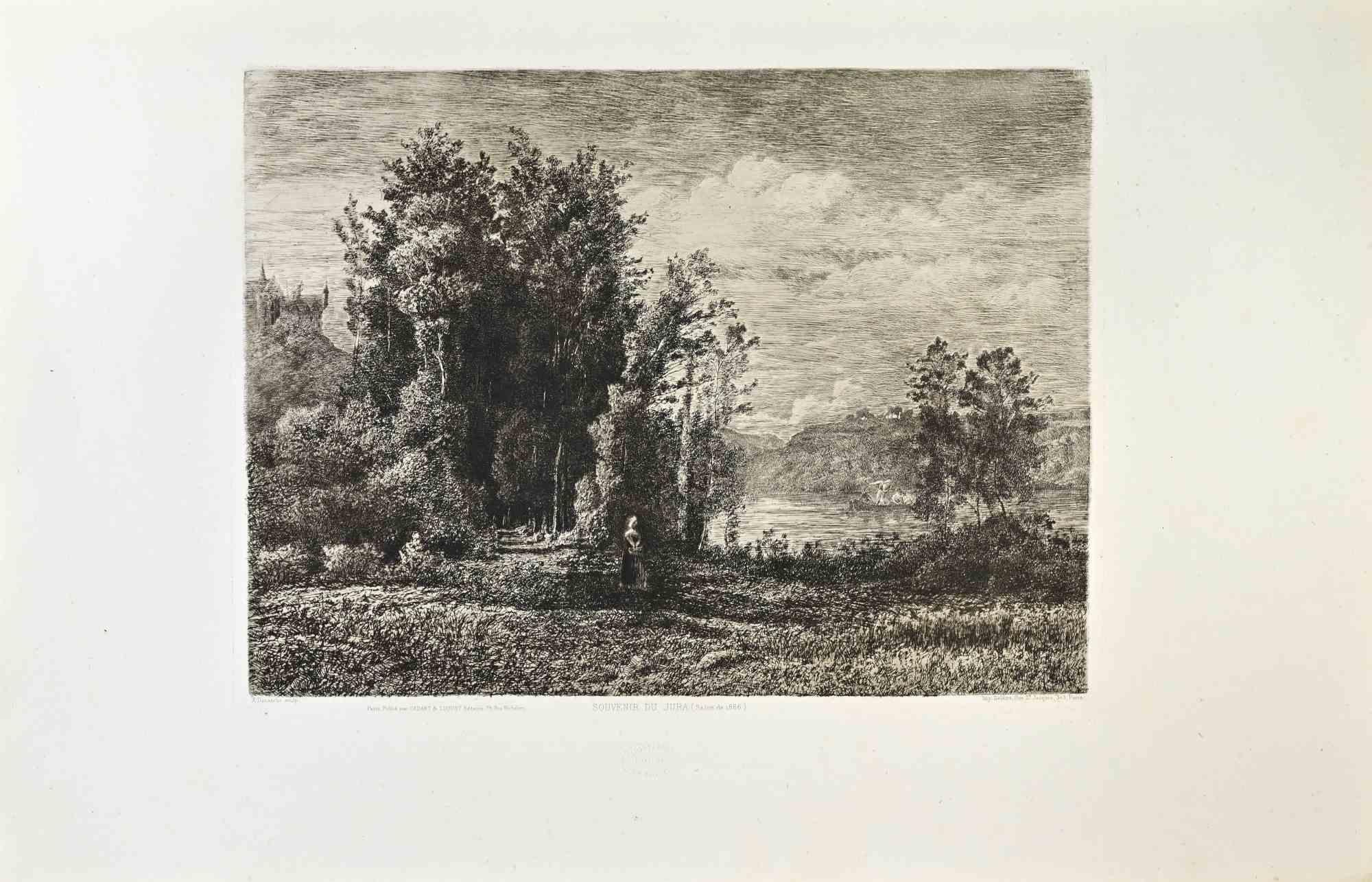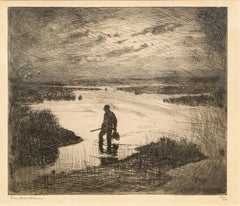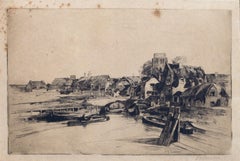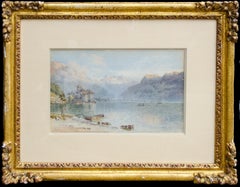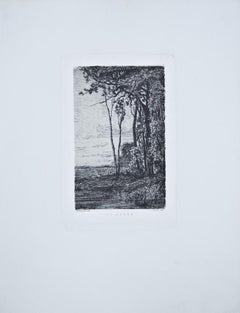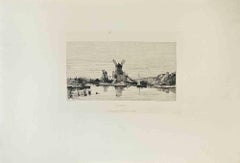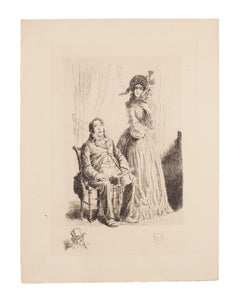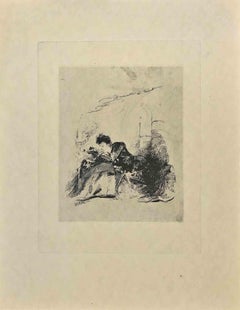Items Similar to 19th Century Engraving by American Impressionist Herman Hyneman
Want more images or videos?
Request additional images or videos from the seller
1 of 8
Herman Hyneman19th Century Engraving by American Impressionist Herman Hynemanc. 1880
c. 1880
$2,200
£1,666.92
€1,912.66
CA$3,095.76
A$3,403.09
CHF 1,788.51
MX$41,325.87
NOK 22,311.17
SEK 21,138.26
DKK 14,274.63
About the Item
Herman Hyneman (American, 1849-1907)
Untitled, c. 1880
Engraving
Sight: 13 x 8 1/2 in.
Framed: 26 1/2 x 20 1/2 x 3/4 in.
Signed bottom
The following is from Peter Jung who credits "a friend named Jeff Gold on Long Island."
Herman N. Hyneman (1849 - 1907) was born in 1849 to one of the most prominent Jewish families in Philadelphia. Unlike most Jewish families of the time, his embraced and encouraged his artistic talent. In 1874, Hyneman followed his first cousin Moses Ezekiel, National Academy member, to Europe to study. They first went to Germany and then to France where Hyneman began eight years of study with Leon Bonnat, the French Master.
In Paris, the twenty-five year old Hyneman resided in a studio building at 75 Boulevard Clichy, with expatriates Frederic Arthur Bridgeman, Charles Sprague Pearce, Milne Ramsey, and Edwin Blashfield. Hyneman was clearly exposed to the works of these more experienced artists, as well as that of Walter Gay.
In 1879, one of Hyneman's genre paintings, entitled "Desdemona", was accepted into the Paris Salon. That painting received favorable reviews both in Europe, and later in Philadlephia where it was exhibited alongside the works of other Philadelphia Artists exhibiting at the Salon that included Thomas Eakins, Pearce, Edward May, and Cecilia Beaux.
----------------------------------------------------------------------
Herman N. Hyneman was a noted American portrait and figure painter with ties to both Philadelphia and New York. He was born July 27,1849 to Leon and Adeline Hyneman in Philadelphia. ("Who Was Who in American Art" lists his birth date as either 1849 or 1859, but we have confirmed that the birth date is 1849).
Virtually nothing is known about his early years, but given the fact that the family resided in a wealthy section of Philadelphia and the fact that he traveled to Paris to study in the studio of Leon Bonnat when he was but 20 years old, it is presumed that the family was financially comfortable if not well to do. Hyneman exhibited at the Paris Salon in 1879 and 1881, which was quite an accomplishment given his tender age.
He returned to the United States in 1882 and after a year in Philadelphia, he established a studio at 58 West 57th Street, New York, NY, where he painted portraits to support himself and scenes of beautiful fair-skinned women walking in the snow to exhibit at major exhibitions throughout the United States.
Hyneman exhibited at the the Brooklyn Art Association in 1882, 1883 and 1884 and at the Pennsylvania Academy of Fine Arts in 1883 and 1888. Beginning in 1882 and continuing up until 1905, he exhibited regularly at the National Academy of Design. Despite the fact that he exhibited fourteen paintings at the National Academy over a span of three different decades, he was never elected as a member.
In the 1880's his paintings sold for between $100 and $1500, which were substantial sums for that period. Hyneman also exhibited at the Salmagundi Club and the Philadelphia Art Club and was a member of each organization. He won a medal at the American Art Society in 1904 and also exhibited at the Chicago Art Institute. A handwritten label on one of his paintings indicates that he also exhibited in Budapest, Hungary.
In 1892, Hyneman married the noted artist Juliet Jolley (aka Jolly), who had previously modeled for him. Thereafter, they shared a studio and on at least one occasion exhibited together. The February 5, 1896 edition of the "New York Times" reported on a "pleasant studio reception" at 58 West 57th Street where the paintings of both Herman and Juliet were shown to members of New York Society including Mr. And Mrs. Edwin Blashfield.
At least one of Hyneman's Painting " A Sensation on Wall Street" which depicted a lovely young woman in fur coat with Muff in front of the Stock Exchange, was made into a post card and reproductions of his paintings are known to exist, although not plentiful. At least one etching is known, "Desdemona," which was reproduced in a book by Frederic Stokes.
Herman Hyneman passed away in Philadelphia in December 1907 after a long illness. The December 24, 1907 "New York Times" carried his obituary.
The New York Public Library collection has a painting of "Newsboys" in the snow, which has been recently been reproduced into a Christmas Card by the Metropolitan Museum of Art. The DeYoung Art Museum holds Hyneman's etching in its permanent collection.
Bio sourced from the Archives of AskArt.
- Creator:Herman Hyneman (1849 - 1907)
- Creation Year:c. 1880
- Dimensions:Height: 26.5 in (67.31 cm)Width: 20.5 in (52.07 cm)Depth: 0.75 in (1.91 cm)
- Medium:
- Movement & Style:
- Period:
- Condition:Not examined outside of the frame.
- Gallery Location:New York, NY
- Reference Number:Seller: BL21stDibs: LU2211213066552
About the Seller
5.0
Platinum Seller
Premium sellers with a 4.7+ rating and 24-hour response times
1stDibs seller since 2022
93 sales on 1stDibs
Typical response time: 1 hour
- ShippingRetrieving quote...Shipping from: New York, NY
- Return Policy
Authenticity Guarantee
In the unlikely event there’s an issue with an item’s authenticity, contact us within 1 year for a full refund. DetailsMoney-Back Guarantee
If your item is not as described, is damaged in transit, or does not arrive, contact us within 7 days for a full refund. Details24-Hour Cancellation
You have a 24-hour grace period in which to reconsider your purchase, with no questions asked.Vetted Professional Sellers
Our world-class sellers must adhere to strict standards for service and quality, maintaining the integrity of our listings.Price-Match Guarantee
If you find that a seller listed the same item for a lower price elsewhere, we’ll match it.Trusted Global Delivery
Our best-in-class carrier network provides specialized shipping options worldwide, including custom delivery.More From This Seller
View AllHerman Hyneman Original American Portrait, Signed and Dated 1907
By Herman Hyneman
Located in New York, NY
Herman Hyneman (1849-1907)
Sunday Morning, 1907
Oil on board
15 3/4 x 11 1/2 in.
Framed: 21 1/3 x 17 1/2 in.
Signed lower right: Copyright 1907 by H.N. Hyneman
Inscribed verso: Sunday Morning by H.N. Hyneman
The following is from Peter Jung who credits "a friend named Jeff Gold on Long Island."
Herman N. Hyneman (1849 - 1907) was born in 1849 to one of the most prominent Jewish families in Philadelphia. Unlike most Jewish families of the time, his embraced and encouraged his artistic talent. In 1874, Hyneman followed his first cousin Moses Ezekiel, National Academy member, to Europe to study. They first went to Germany and then to France where Hyneman began eight years of study with Leon Bonnat, the French Master.
In Paris, the twenty-five year old Hyneman resided in a studio building at 75 Boulevard Clichy, with expatriates Frederic Arthur Bridgeman, Charles Sprague Pearce, Milne Ramsey, and Edwin Blashfield. Hyneman was clearly exposed to the works of these more experienced artists, as well as that of Walter Gay.
In 1879, one of Hyneman's genre paintings, entitled "Desdemona", was accepted into the Paris Salon. That painting received favorable reviews both in Europe, and later in Philadlephia where it was exhibited alongside the works of other Philadelphia Artists exhibiting at the Salon that included Thomas Eakins, Pearce, Edward May...
Category
Early 1900s American Impressionist Figurative Paintings
Materials
Oil, Board
Frank Weston Benson Original Etching, Early 20th Century
By Frank Weston Benson
Located in New York, NY
Frank Weston Benson (American, 1862-1951)
Untitled, 20th Century
Etching
Sight: 10 1/3 x 12 1/8 in.
Framed: 16 3/4 x 19 x 1/2 in.
Signed lower left
Numb...
Category
20th Century Modern Figurative Prints
Materials
Etching
DY Cameron 19th c. European Village Etching
By David Young Cameron
Located in New York, NY
D.Y. (David Young) Cameron (Scottish, 1865-1945)
The Border Tower, c. 1893
Etching
Sight: 9 x 13 1/4 in.
Framed: 15 1/4 x 19 1/2 x 1/2 in.
Signed in pencil lower right
Cameron trained at the Glasgow and Edinburgh Schools of Art in the early 1880s and was at first associated with the Glasgow Boys. He became a leader in the Scottish etching...
Category
1890s Academic Landscape Prints
Materials
Etching
19th Century Watercolor by Samuel Phillips Jackson, RWS
By Samuel Phillips Jackson
Located in New York, NY
Samuel Phillips Jackson R.W.S. (British, 1830-1904)
Untitled Landscape, 18th century
Watercolor on Paper
Sight size: 8 1/4 x 12 3/4 in.
Framed: 17 1/2 x 22 in.
Signed lower left: S.P. Jackson R.W.S.
Samuel Phillips Jackson was born in the city of Bristol in September 1830, the son of the equally eminent watercolourist Samuel Jackson...
Category
18th Century English School Landscape Drawings and Watercolors
Materials
Paper, Watercolor
Original James M. Hart
Located in New York, NY
James MacDougal Hart (American, 1828-1901)
Untitled (After Troyon), 19th century
Oil on canvas
18 1/16 x 30 1/16 in.
Framed: 31 1/2 x 40 1/2 in.
Signed lower right: James M Hart...
Category
19th Century American Impressionist Landscape Paintings
Materials
Canvas, Oil
James Allen St. John, Portait of a Lady
Located in New York, NY
James Allen St. John (American, 1872-1957)
Portrait of a lady, Early 20th Century
7 3/4 x 5 1/4 in.
Framed dimensions: 17 1/2 x 15 x 3in.
James Allen Saint John was born in Chicago,...
Category
Early 20th Century American Impressionist Figurative Paintings
Materials
Canvas, Oil
You May Also Like
The Ford - Etching by Adolfo Bignami - 1870
Located in Roma, IT
Signed in plate lower left. Stamped title.
Published by Lovera.
Good condition.
Category
1870s Modern Figurative Prints
Materials
Etching
Souvenir - Etching by Adolphe Appian - 1870s
By Adolphe APPIAN
Located in Roma, IT
Souvenir is a black and white etching realized by Adolphe Appian (1818–1898) in 1870s.
Titled in the lower.
Image size: 23.5cmx13cm.
Very Good condition.
Realized by Cadart for t...
Category
1870s Modern Figurative Prints
Materials
Etching
The Rich - Original Etching by Auguste Brouet - Early 20th Century
By Auguste Brouet
Located in Roma, IT
"The Rich" is included two original prints on creamy paper, realized by the French artist Auguste Brouet.
In very good condition.
These artworks represent men and women depicted s...
Category
Early 20th Century Modern Portrait Prints
Materials
Etching
Il Ressemble à Ernest - Etching by Adolphe Willett - Late-19th century
By Adolphe Willette
Located in Roma, IT
Il Ressemble à Ernest is an Original Etching and Drypoint realized by Willette (Adolphe Leon).
Good condition on a yellowed paper.
signed on plate on the lower left corner and titl...
Category
19th Century Art Nouveau Figurative Prints
Materials
Etching
William Ridley - Etching by William Ridley - 1870s
Located in Roma, IT
Draham Harbour is an artwork realized by William Ridley in the 1870s.
Etching.
Good conditions.
Realized for the "Société des Aquafortistes. Born on the initiative of the publish...
Category
1870s Modern Figurative Prints
Materials
Etching
Souvenir du Jura - Etching - 1870s
Located in Roma, IT
Souvenir du Jura is an artwork realized by X.Dananche in the 1870s.
Etching.
Good conditions.
Realized for the "Société des Aquafortistes. Born on the initiative of the publisher ...
Category
1870s Modern Figurative Prints
Materials
Etching
More Ways To Browse
19th Century Engravings
19th Century Engraving Framed
Antique Reproduction Paintings
Antique Muff
Herman Gold
Picasso Gouache
Picasso Portrait Imaginaire
Rauschenberg Plate
Robert Longo Gretchen
Tete De Jeune Fille
Warhol Invitation
Alex Katz Laura
Alex Katz Orange Hat
Andy Warhol Reigning Queens
Andy Warhol Trial Proof
Basquiat Skull
Castelli Invitation
Chris Levine Lightness Of Being
